Joining two boards perfectly together has never been so easy and convenient, not until the use of a dowel jig. Every woodworker must agree; that using a dowel jig creates a secure and highly strengthened joint that’ll keep your boards together for a long while, most likely forever if properly fitted.
Dowelling involves creating pegs that fit perfectly into holes – fitting them perfectly together is the only possible way to keep two or more pieces of wood together. A dowelling jig is the best tool to use if you’ll be making a lot of dowels to join two boards together – for accuracy and precision. Although there are other ways to go about this, like plastering, using pocket screws or biscuits, however, using a dowel is undefeated.
Buyer’s Guide for Dowel Jig
Before getting to know how to use a dowel jig, you should know what to look out for, just in case you’re purchasing one or renting one. One of the best ways to successfully use a dowel jig is knowing its abilities and disabilities. With this brief buyer’s guide, you’ll gain sufficient knowledge of the dowel jig. Sufficient enough to make the right decision.
Below are some of the factors to consider when choosing a dowel jig;
Bushing size
The type of project you’re working on is dependent on the bushing size of your dowel jig. If you work on a variety of projects, without being sure of what project you’ll work on next as a professional woodworker or a DIYer with a diversified portfolio, purchasing a dowel jig with various bushing sizes is the best choice to make.
Material
While using a dowel jig, there are high possibilities that it’ll fall a couple of times, or you might bump it on your workbench or the wall while moving it. Falling and bumping your dowel jig against another object is inevitable, and the only way to reduce the damages it might cause is purchasing one with a rigid body construction.
Aluminum and stainless-steel dowel jigs are known to be sturdy, adding to its durability. It is best to purchase a dowel jig made out of these materials to prevent frequent repairs or total replacement. If you’re purchasing an aluminum dowel jig, there are high chances of seeing signs of corrosion, so you need to be extra careful when handling it, unlike the stainless-steel dowel jig, which is resistant to corrosion.
Versatility
Another feature to look at when looking for the right dowel jig to purchase is its versatility. You don’t want to have more than one dowel jig just because the previous one you purchased can’t perform specific tasks.
It is best to purchase one that can be used to carry out a variety of projects effectively. Put into consideration the number of connections it can create, the type of connections, and its ability to work on different sizes of wood.
Self-centering
Purchasing a dowel jig that automatically aligns your dowels and holes for a perfect fit is essential for a strong and effective joint – it saves time, stress and, money. Most times, the accuracy of your dowel jig is dependent on whether it is self-centering or not.
Accuracy
The accuracy of your dowel jig is more important than you think. You may end up finding it difficult to fit your bushings into the drilled holes – this isn’t totally dependent on your skill level, but the accuracy of your dowel jig.
Getting yourself a good dowel jig will eradicate all forms of loose holes or oversized bushings. Precision is key in dowelling, and only a good dowel jig will make sure of that.
How to Use a Dowel Jig – One Step at a Time
Now that you know what to look out for when purchasing a dowel jig, you rest assured that you’ll experience little or no technical issues while putting it to use. Using a dowel jig could be quite tricky, but with enough practice, you’ll become a master in no time.
Without further ado, let’s learn how to use the dowel jig without having to break a sweat. Here we go!
Step 1: Loosen side bolts of your dowel jig
Loosen the side bolts of your dowel jig to make it easy to align with the piece of wood you’re working on.
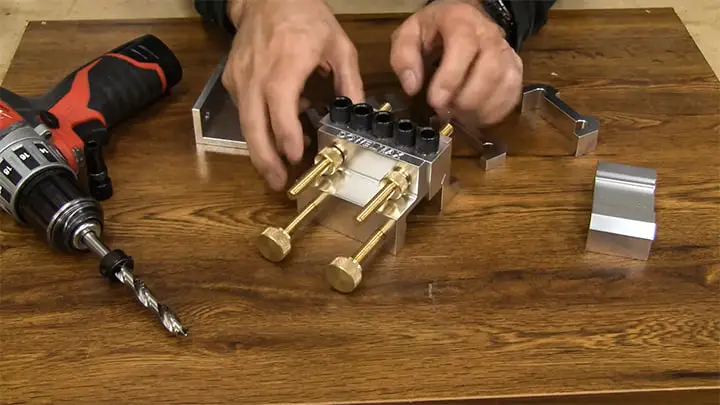
Step 2: Mark your wood
Gather the pieces of wood you wish to use and mark them with a pencil or a marker. These marks serve as reference points for added accuracy.
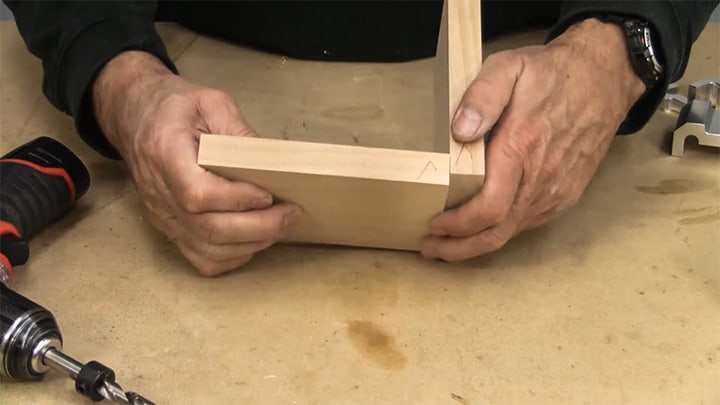
Step 3: Make sure your wood and dowel jig is aligned
Your dowel jig also has a mark on it, and all you need to do is make sure both your dowel jig and wood are in alignment.
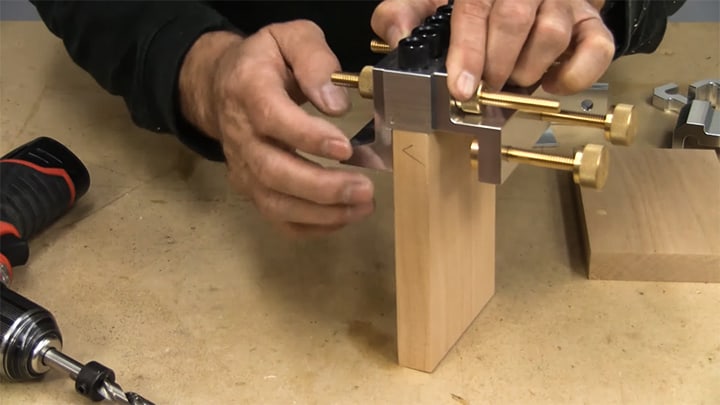
Step 4: Drill as many holes as you want
Make sure you tighten all the bolts to keep your wood in place and make drilling easier. Drill as many holes as you want, according to the capacity of your doweling jig.
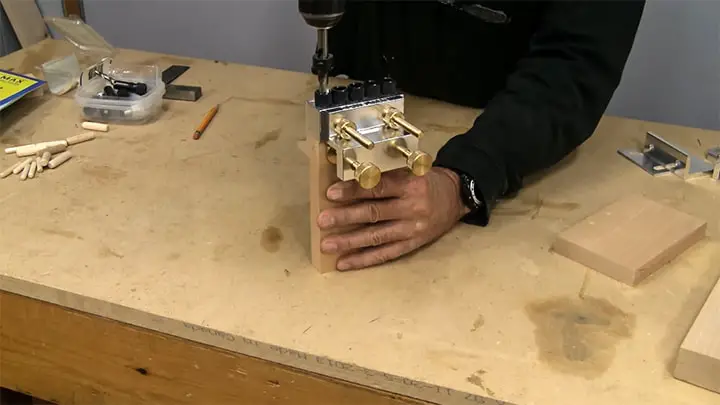
Step 5: Take your other piece of wood and repeat
Repeat the same process on the other piece of wood.
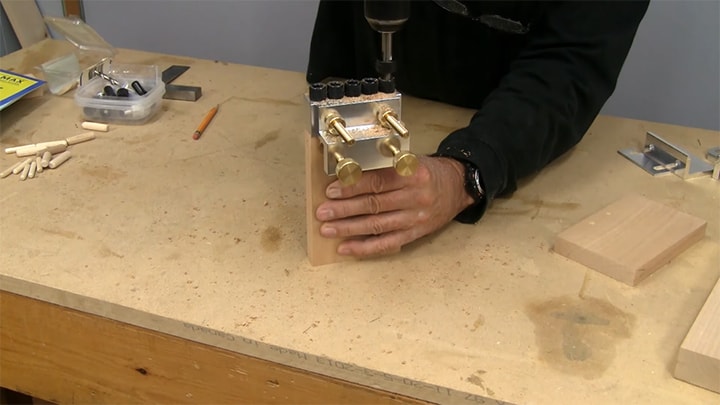
Step 6: Drill the second piece of wood
When drilling the second piece of wood, you’ll have to take the other part of the doweling jig to horizontally drill your second piece. You might be needing help from a manual clamp to keep your wood in place, as it might tend to move a lot during this process.
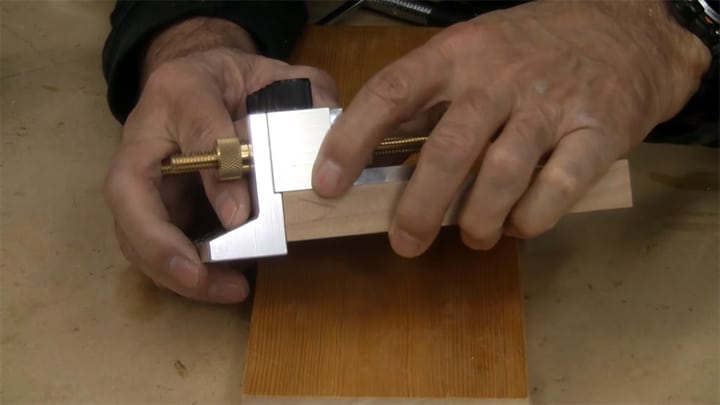
Step 7: Insert your dowels
You can proceed by inserting your dowels into the holes of either of the drilled piece of wood. Apply glue to your dowels too.
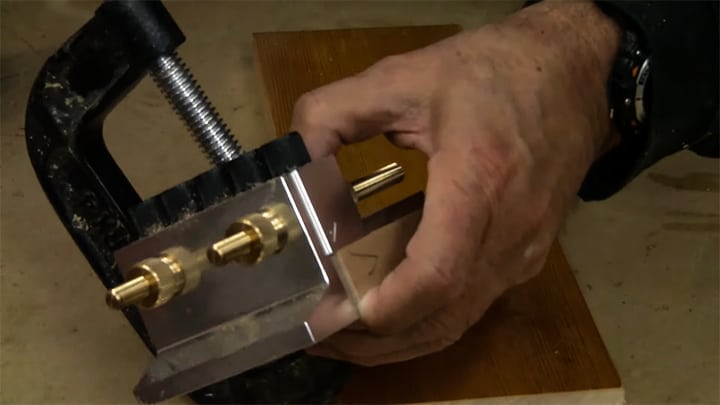
Step 8: Assemble
Assemble your project by fitting your second piece of wood to the first and see how strong the connection is.
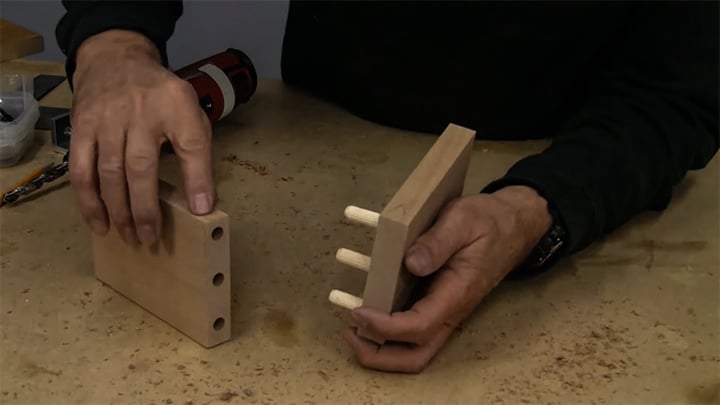
Now that you’re done with the major work, you can test its strength by trying to pull them apart.
Conclusion
See! Using a dowel jig isn’t as difficult as you thought it’d be. All you need is a fully functional dowel jig and a little bit of patience to avoid mistakes. You might not get the whole process on your first try, but try not to beat yourself up, you’ll get it soon enough – enough practice leads to perfection.
Friendly Advice: Using fluted dowels creates a stronger bond when connecting two pieces of wood. The flutes allow you to use glue as fillers. You get stronger and tighter joints using fluted dowels, unlike other types of dowels out there.
I hope this article has been of great help.
I'm Joost Nusselder, the founder of Tools Doctor, content marketer, and dad. I love trying out new equipment, and together with my team I've been creating in-depth blog articles since 2016 to help loyal readers with tools & crafting tips.
